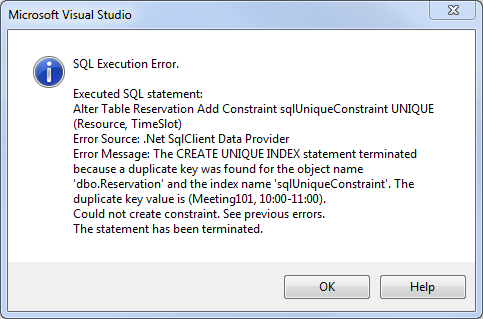
- #POSTGRES UNIQUE CONSTRAINT MULTIPLE COLUMNS FOR FREE#
- #POSTGRES UNIQUE CONSTRAINT MULTIPLE COLUMNS HOW TO#
- #POSTGRES UNIQUE CONSTRAINT MULTIPLE COLUMNS FULL#
- #POSTGRES UNIQUE CONSTRAINT MULTIPLE COLUMNS CODE#
- #POSTGRES UNIQUE CONSTRAINT MULTIPLE COLUMNS LICENSE#
The different uses of PostgreSQL DISTINCT Clause are as follows: Syntax #1 SELECT
#POSTGRES UNIQUE CONSTRAINT MULTIPLE COLUMNS HOW TO#
How to use the PostgreSQL DISTINCT Clause?

#POSTGRES UNIQUE CONSTRAINT MULTIPLE COLUMNS FULL#
Try our 14-day full access free trial today to experience an entirely automated and seamless Data Replication! What is PostgreSQL DISTINCT Clause? Hevo is the fastest, easiest, and most reliable data replication platform that will save your engineering bandwidth and time multifold.
#POSTGRES UNIQUE CONSTRAINT MULTIPLE COLUMNS FOR FREE#
Hevo’s Pre and Post Load Transformations accelerate your business team to have analysis-ready data without writing a single line of code! GET STARTED WITH HEVO FOR FREE With Hevo, you can replicate data from a growing library of 150+ plug-and-play integrations and 15+ destinations - SaaS apps, databases, data warehouses, and much more. Hevo, a fully-managed Data Pipeline platform, can help you automate, simplify, and enrich your data replication process from PostgreSQL in a few clicks.
#POSTGRES UNIQUE CONSTRAINT MULTIPLE COLUMNS CODE#

Apple, Etsy, Facebook, Instagram, Red Hat, Skype, Spotify, and many other companies utilize PostgreSQL.
#POSTGRES UNIQUE CONSTRAINT MULTIPLE COLUMNS LICENSE#
Since PostgreSQL offers no license costs, there is no risk of over-deployment, which saves a lot of expenses. The source code for PostgreSQL is publicly accessible under an open-source license, letting users use, modify, and implement it as needed. PostgreSQL is compatible with a wide range of operating systems, including Windows, Linux, macOS, and UNIX.

PostgreSQL is also capable of serving as a data warehouse system. In addition to RDBMS capabilities, it provides indexes, views, stored procedures, triggers, atomicity features, and so on. It is famous for its Open-Source platform, which supports all RDBMS functionalities. PostgreSQL is a high-performance, open-source relational database. Read along to find out in-depth information about creating PostgreSQL DISTINCT Clause. You will also gain a holistic understanding of PostgreSQL, its key features, different syntax, and examples of PostgreSQL Clause. In this article, you will gain information about PostgreSQL DISTINCT Clause. 4) PostgreSQL DISTINCT Clause: Multiple Tables.



 0 kommentar(er)
0 kommentar(er)
